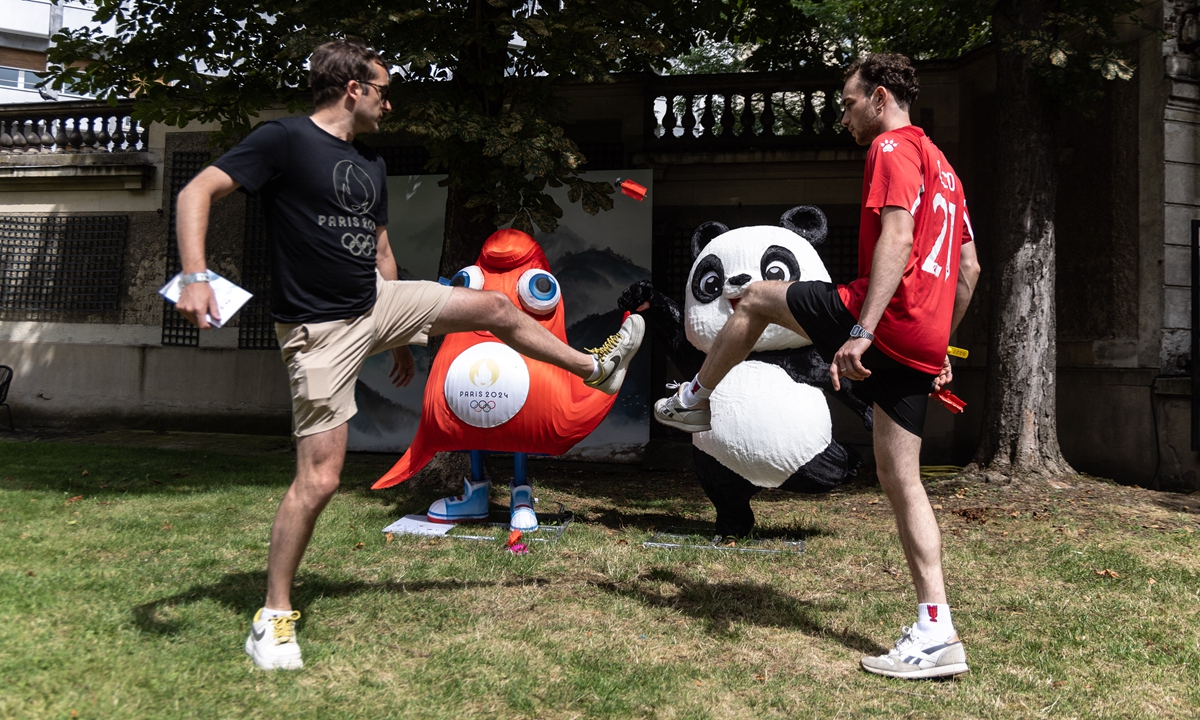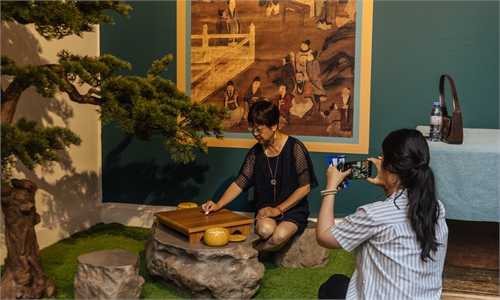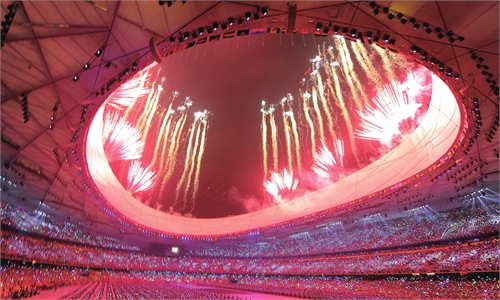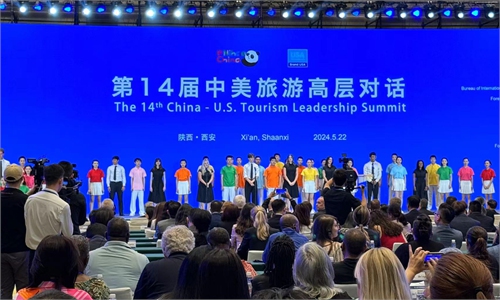
Photo: Li Hao/GT
Accompanied by the background music of a renowned Chinese song that describes how a man should strive to better himself, a French girl practiced martial arts with precise movements, occasionally crying out in a strong and energetic voice... This is just one of the scenes at the China House at the ongoing Paris 2024 Olympic Games.
The traditional Chinese sports culture event was held at the China House on Saturday in Paris, attracting more than 30 French teenagers and their parents to the venue. They watched in awe as traditional Chinese martial artists showcased their skills, and then eagerly joined in the fun, trying ancient activities like pot-throwing and Chuiwan (an ancient Chinese ball game) themselves. The air was filled with laughter and joy.
I was told that the first "China House" was set up during the Vancouver 2010 Winter Olympics, but this was my first time experiencing it in person. As I walked into the China House, I was immediately enveloped by a lively atmosphere. The venue was bustling with excitement as everyone eagerly participated in various activities. Seeing the French teenagers and their parents so enthusiastically engaged in experiencing traditional Chinese culture brought me immense satisfaction.
The China House, a pavilion set up at the Hotel Salomon de Rothschild in Paris, is a comprehensive service facility established and operated by the Chinese Olympic Committee for the Chinese sports delegation participating in international multi-sport events. It serves as a vital hub supporting the Chinese sports delegation while also promoting the Chinese sports spirit as it showcases traditional culture, and fosters Sino-international sports communications.
During the event, an intangible cultural heritage Wing Chun inheritor introduced the culture behind Wing Chun, a traditional Southern Chinese martial art known for its close-range combat techniques, efficiency and emphasis on simultaneous attack and defense, to the audience. Watching the inheritor's live "combat demonstration" performance, I was deeply captivated by the essence of Wing Chun.
Annebelle, a 9-year-old French girl, then took the stage to perform a set of Chinese martial arts moves. Her movements were not only smooth and precise but also energetic, with her occasional shouts commanding the entire scene. The audience quickly took out their phones to record videos of the performance and applauded her warmly. Yu Jianyong, a deputy secretary-general of the Chinese Olympic Committee (COC), presented her with a limited-edition Bing Dwen Dwen, the Beijing 2022 Winter Olympics mascot as a souvenir.
There were other activities including intangible cultural heritage calligraphy, seal carving and pot-throwing that I experienced. The pot-throwing, in particular, attracted many teenagers as they were given detailed introductions to the origin, development, and basic rules of the game. I tried pot-throwing myself and though I didn't succeed on the first attempt, the process was very enjoyable.
The exhibition area in the China House features artifacts showcasing the elegance of ancient Chinese sports, like the painted female cavalry figurines, as well as an overall review of the Chinese delegation's Olympic journey, including original torches from the Beijing 2008 Olympics and Beijing 2022 Winter Olympics.
Seeing these exhibits, I couldn't help but think of the 60th anniversary of diplomatic relations between China and France. This time, a special area in the exhibition was dedicated to reviewing the history of Chinese-French sports exchanges, displaying jerseys worn by Beijing Guoan and Bordeaux during the 1998 Sino-French soccer match.
Seeing everyone so interested in Chinese culture made me feel incredibly proud. The entire event not only successfully showcased the profound heritage of Chinese sports culture but also used the platform of the Paris 2024 Olympics to bring traditional Chinese sports culture to an international audience, allowing more foreign spectators to understand and fall in love with Chinese culture. I hope there will be more opportunities like this in the future to let Chinese culture reach the world.



